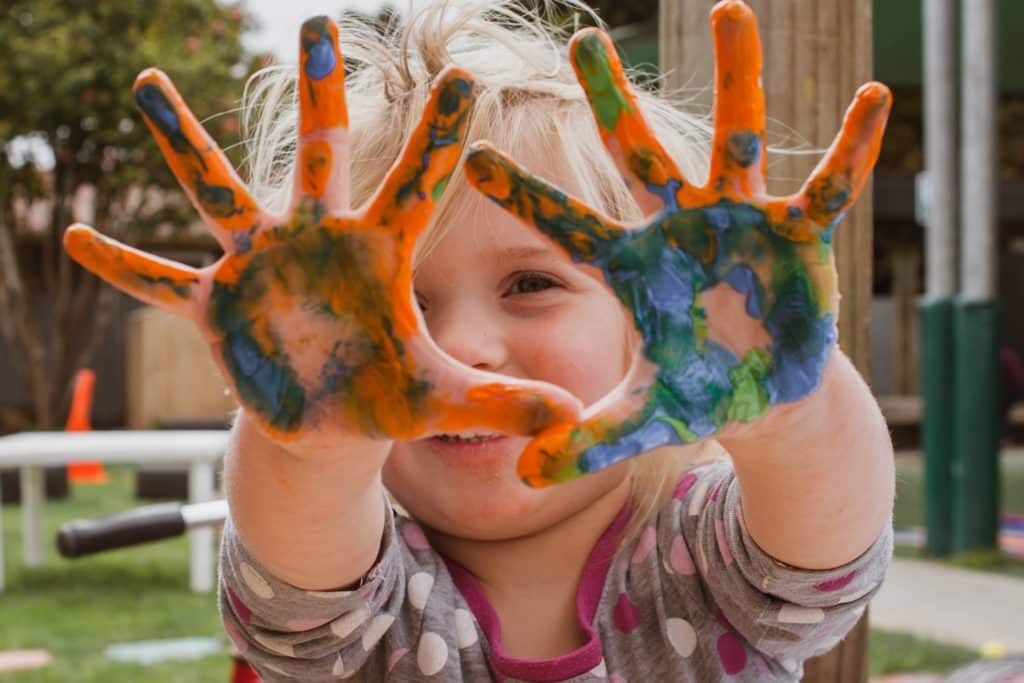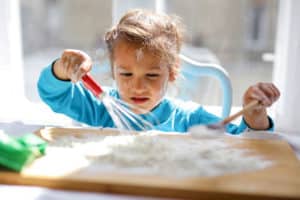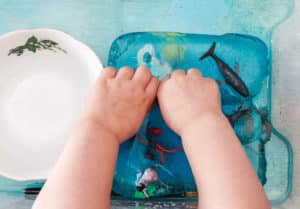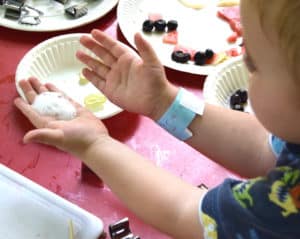
My name is Sandra Faucher and I am an Early Years Practitioner for Lewisham Children and Family Centres.
I’m going to share with you some information about Messy Play and I’ve put together some simple ideas and recipes to make it fun during these challenging times.
I hope you enjoy it.
What is messy play?
Messy play (which is also called sensory play) is a way of encouraging children to learn about raw materials like sand or mud and experience other resources that they would not normally have access to like shaving foam or cornflour.
The emphasis is for them to explore the materials in an unrestricted way without being told by the adult ‘No don’t do that, it’s dirty! or ‘it will make a mess!’ or any other unintentional unhelpful comments.
The benefits of messy play and Child Development
Although messy play is often provided in early years settings or from an early years provider, it can also be done at home. Now we are all spending more time at home, it is particularly important that young children can benefit from different play experiences indoors and outdoors (where possible).
Here’s some information on how messy play can be simple, made fun and exciting at home and why it’s an important experience for children.
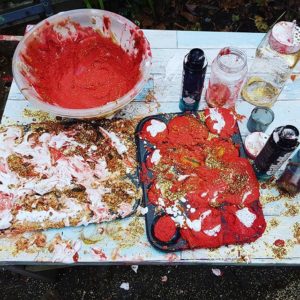
Curiosity
One of the benefits of messy play is that it encourages experimentation-which is something we have the desire to do throughout our lives, so starting from an early age with these resources enables us to build on them.
Play at home
Baby Messy Play
In the bath
NEVER LEAVE YOUR CHILD ALONE IN THE BATH
A child having a bath is one of the best opportunities to encourage messy play. Simple ideas such as adding sponges, plastic bottles and fun toys to give your child an opportunity to explore and splash around and enjoy the experience whilst learning.
Other ideas could include:
- plastic water books
- water wheels
- sponge alphabets
Anything that gives a simple, fun, sensory experience.
Experiencing the water alone can be a very satisfactory experience, letting it run through the fingers, watching the water simply trickle from a flannel, jug or other item are in themselves simple, yet enjoyable experiences.
Meal times
If a child struggles with textures, especially with food, messy play is a great way to encourage sensory exploration away from the dinner table. It is a fun and less stressful way to explore textures and the essence will be more on enjoyment instead of a battle.
Young children will be particularly curious about new foods and their way of experiencing them is to learn with their senses; sight, touch, taste. A good way to encourage this is to prepare food with them (where possible) so they can experience the different colours, textures, smells etc.
This is also a good way for very young babies particularly those going through the weaning stage, where trying finger foods is the focus, and therefore they benefit from the first stages of this sensory experience.
Getting Outside
Outdoor experiences e.g a garden if you have one, a nearby park or green are good ways to benefit from messy play.
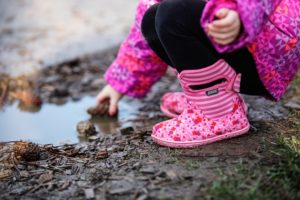
Proper outdoor wear is important e.g wellies, raincoats etc and getting out in all weathers with the children should be encouraged.
However, you don’t have to wait for a particular season for a particular experience i.e you can experience rain in any season etc.
Summer-Sunshine: heat, warmth, melting
Spring-Wind, rain, frost
Autumn-Wind, rain
Winter-Snow, frost, ice
Extra benefits of Messy Play
There are other benefits of messy play which include helping to build nerve connections in the brain and so helping the development of motor skills should be encouraged.
These nerve connections in the early years provide a strong foundation which helps children’s ability to engage with more complex learning tasks as they get older.
Messy Play and Areas of Development
Physical Development/Skills – Children can develop many physical skills.
- Fine motor skills-movement with fingers
- Hand and shoulder strength-building blocks for future handwriting
- Using senses-balance and body awareness to enhance gross motor skills
- How things feel-textures and temperatures
- Personal boundaries, body awareness, special awareness
- Pre-writing Skills
- Pouring, scooping, grasping while perfecting hand eye co-ordination
Language Development/Skills – Can lead to brilliant discussions with children
- How does it feel? You could give examples.
- g hard, soft? Or other open ended questions
- A great way for children to engage is using pretend play and symbolic language.
- Shaving foam, play dough etc can be used as ice, mountains, or whatever the child feels comfortable with.
- Children also tend to talk more when engaged in pretend play as they appear more relaxed so their language tends to be more fluid and descriptive.
Cognitive Skills – Messy Play is really the beginning of STEM learning.
STEM stands for a learning approach which focuses on science, technology, engineering and maths in learning.
It is important in early years education as the STEM learning process can promote a positive educational foundation which can lead to better preparation for our increasing technological world.
STEM based education is not only about these concepts, but more importantly about the ‘hands on learning’ with applications from the real world, which helps young children to develop relevant skills, including creativity and competence in these skills.
Messy play provides a perfect opportunity for STEM learning as the hands on approach enables young children to gain benefits which include:
- The fostering of ingenuity and creativity which go hand in hand with STEM and lead to new ideas, innovations etc.
- The building of resilience e.g immune system-exposure to the elements, different kinds of weathers
- The encouragement of experimentation and exploring
- The encouragement of teamwork-working together
- Applying knowledge-applying what they already know
- The use of technology
- Problem solving-e,g how many scoops of sand will fill my bucket?
A few simple appropriate activities to do that incorporate STEM learning are:
- Baking soda-add water, colours-food dye, paint to experience what happens
- Ice melting-freeze water see what happens before and when it melts
- Seeds in a jar-what happens to seeds planted in a jar
Maths Skills can include things like size, matching, sorting
Science Skills can include cause and effect, problem solving and beginnings of the scientific method.
Social and Emotional Development/Skills messy Play can help children to be calm and focus on a task.
- It is not just beneficial for under 8s but also for teenagers who may have challenging behaviour.
- Messy Play is a great way to encourage children to work together and co-operate in a group or one on one play.
- Children learn about personal boundaries, understanding someone else’s ideas and views and have the opportunity to express their own.
Creative Development/Skills
There is no right way for creativity in Messy Play.
It leaves the child in control of the outcome and they have the freedom to explore which in turn boosts their confidence and leads to high self esteem.
Sensory Input
The most obvious benefit of messy play is added sensory input.
Children learn through experiences and hands-on activities.
Messy play is one of the best ways to do this.
I have put together some simple ideas for messy play/sensory experiences starting with newborns
Newborns: waterplay and bubbles
0-3mths: blanket on grass- to feel grass, listen to nature sounds
3-6mths: exploration on the stomach
6mths onwards: mud, sand, paints, clay, slime, dough, feathers, leaves, soil,
Feel free to use other materials that are safe.
Lastly for very young children, a high chair for messy play activities is perfectly suitable and for older children a large tray or protective covering for the floor is also suitable either in an outdoor space but experiences inside are of positive benefit.
Please also remember to supervise the children at all times to be avoid accidents as much as choking, drowning or inhaling a substance.
Hope you have lots of fun!
Sandra
Here is some more information and ideas on play and messy play:
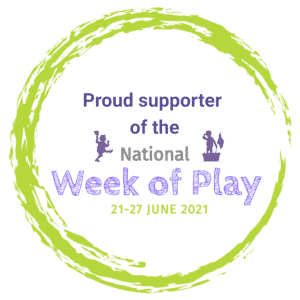
As part of the National Week of Play the Early Years Alliance have produced a series of Family Time Tip Sheets.
Download todays sheet for more ideas for play:
Family Time Tips 4 – Tactile Thursday


